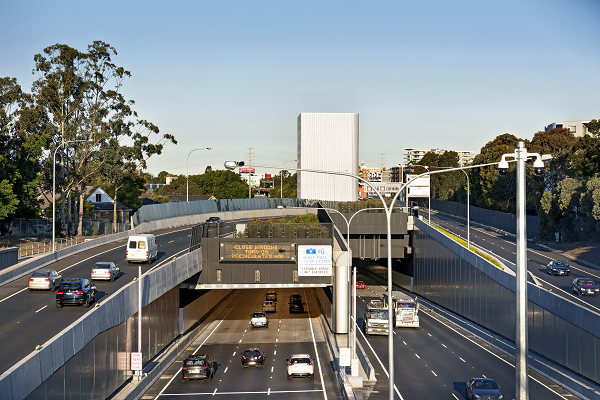News
Pertronic fire system puts M4 East Tunnel operations staff in full control
Tweet
Sydney’s Western Motorway’s M4 East Tunnel, and more particularly its Pertronic first system, continues to operate flawlessly.
The 5.5km, six-lane M4 East Tunnel uses a Pertronic F220/Net2 Network, with 93 of the company’s flagship panels all interconnected with detection devices and fire suppression methods.
Two duplicated Pertronic NET2CARD Modbus interfaces connect the fire system to the tunnel’s dedicated plant monitoring and control system (PMCS).
Construction of the A$3.8 billion M4 East Tunnel began in 2016, and was opened in July 2019.
The tunnel’s fire protection is based on six LIOS four-channel fibre-optic linear heat detection controllers connected to F220 fire panels through Pertronic SPIB-LIOS (Modbus) interfaces. The controllers are configured with 517 linear heat detection zones covering the east-bound and west-bound roadways, together with the entry and exit tunnels.
The networked panels also monitor heat and smoke detectors in cross passages, equipment areas and buildings throughout the tunnel complex. Additionally, there are hydrocarbon detectors with foam suppression in the drainage sumps and aspirating smoke detectors in server rooms, as well as 26 Pertronic hydrant valve control boards in addition to Pertronic FireMap® GUI hydrant controls.
Programming of the network, as with all Pertronic systems is a relative breeze. A total configuration of the software took just under three minutes to carry out, with firmware being updated in 15 minutes. Any subsequent software and firmware updates can be carried out remotely – even from an office thousands of kilometres away. Other fire detection and protection brands would require software updates at individual panels, road closures, and considerable time to achieve the same results.
Naturally, the speed of system alarm response is critical in optimising people and property safety. Tests carried out on M4 East indicate that even from the most distant detectors, an alarm is initiated within 3-5 seconds.
Tunnel operators have a full picture of M4 East through the Pertronic FireMap® graphic user interface, which provides touch-screen control and monitoring of the fire detection and suppression systems. Operators are able to over-ride the automatic suppression system when manual intervention is considered appropriate.
The detection of excessive heat produces an automatic signal to an alarm monitoring service (which in turn call the fire brigade) by the F220-Net2 Network. The network also sends an alarm signal to the PMCS, initiates a water deluge in the affected zone and activates alarm strobes at the tunnel portals. It should be noted that the Modbus (PMCS) is bi-directional. Operators can isolate solenoids, or drive them to open or close motorised hydrant valves.
The PMCS also begins pre-programmed planned evacuations. This may include taking control of ventilation fans and signage, and broadcasting pre-recorded voice messages over loudspeakers throughout the tunnel.
The final design for the M4 East Tunnel required collaborative interactions between the tunnel endusers/managers, fire engineer consultants, contractors/installers and Pertronic personnel.
Since installation and commissioning, the Pertronic system has continued to operate precisely as intended, protecting people and property.
This M4 East Tunnel system exemplifies the advanced information-processing capabilities of the Pertronic F220, and along with the Pertronic F220-Net2 Network puts tunnel operations staff in full control of fire protection.
 CLICK to CALL US NOW
CLICK to CALL US NOW